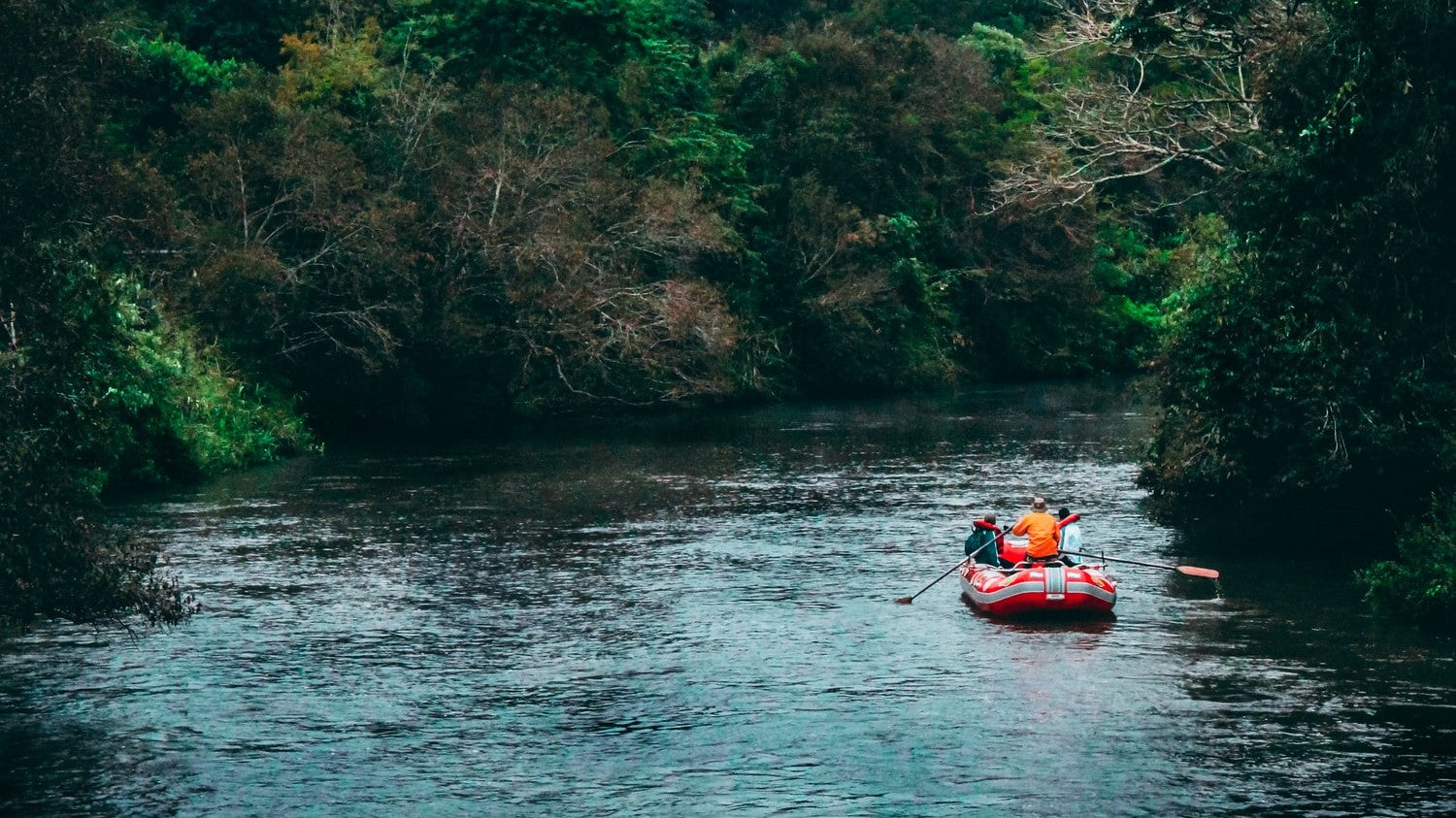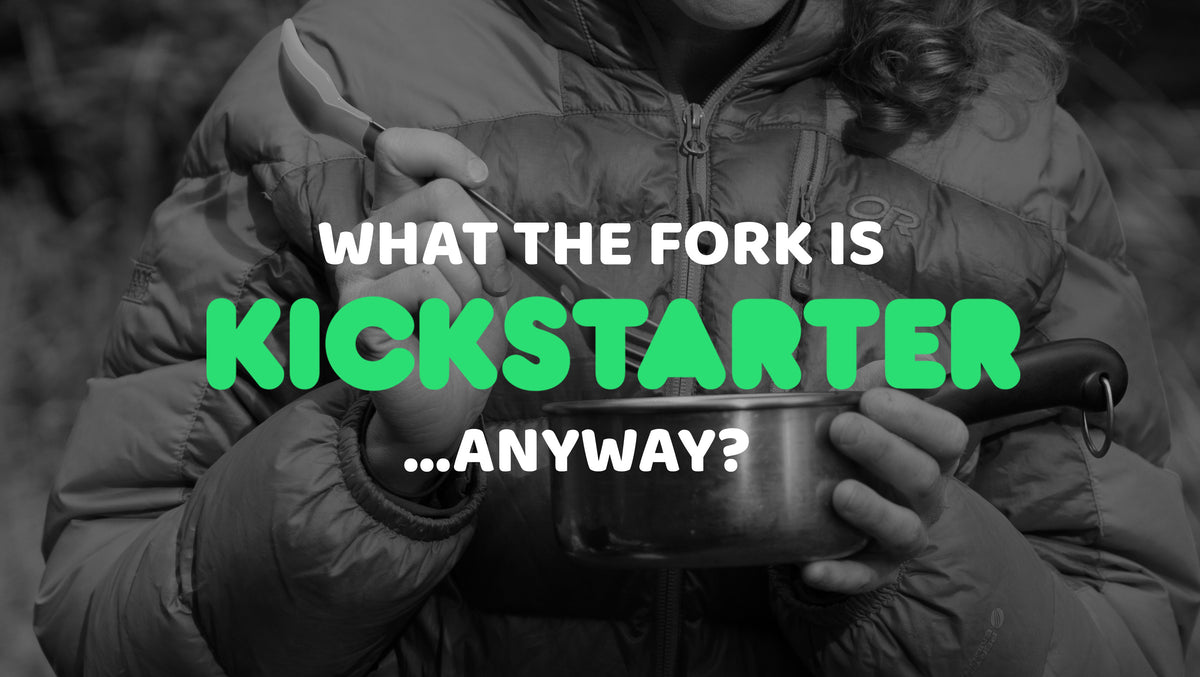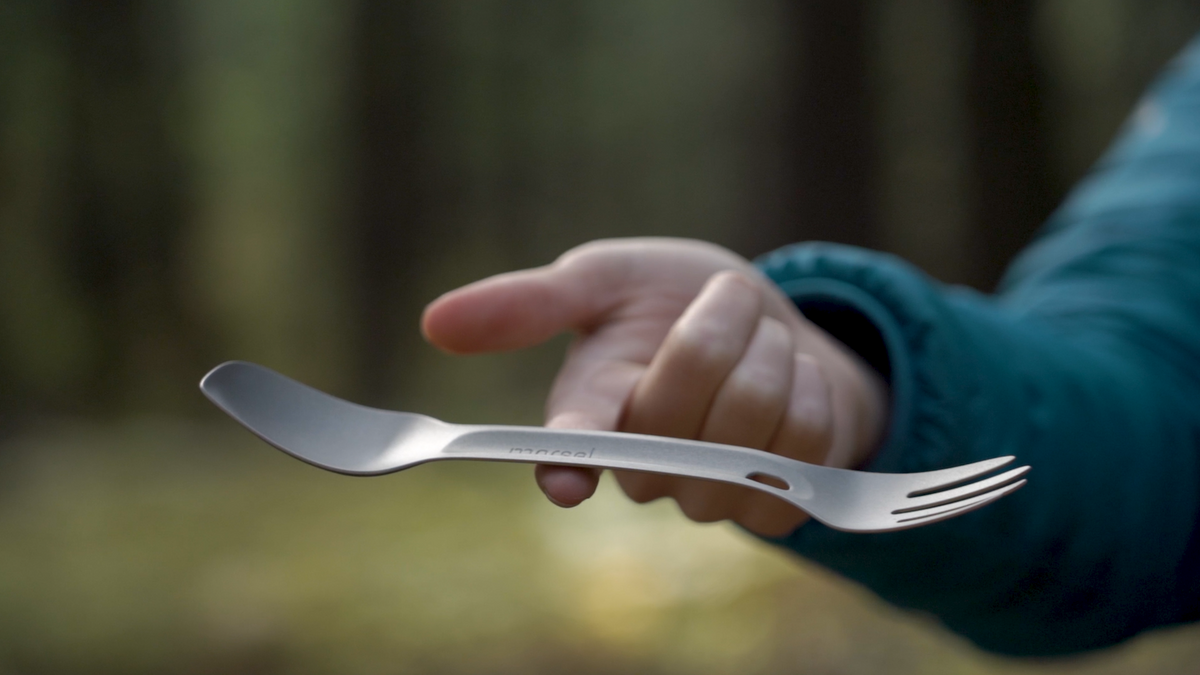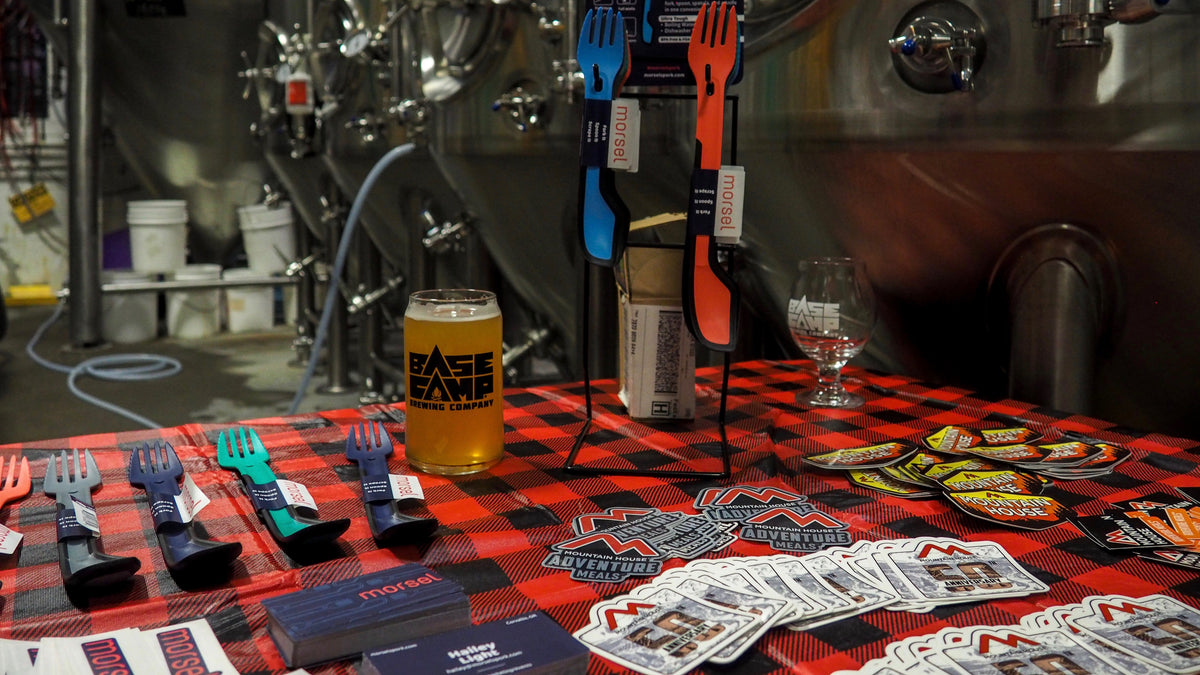
Packing List for Multiday Rafting Trips
1. Dry Bags
On any rafting trip, it's inevitable not to get wet. However, dry bags are your saving grace and will preserve that change of dry clothes for when you set up camp. Anything you don't want getting wet should go in a dry bag. Trash bags do not count as dry bags and are generally not durable enough. I like to get different sizes of dry bags to organize my things a little better. For clothes, sleeping bags, and other small compactable items, I like the Sea to Summit e-vent compression dry bags. To organize smaller items I use NRS Bill's Bag. These have backpack straps for easy carrying up shores to camp or to strap down on the boat.

2. Cam Straps
How would you like to spend four nights in the backcountry without any gear? That could happen if you don't strap your gear down to the raft and you happen to dump your boat in that fun, yet terrifying, class four rapid. If you're not the main person bringing the raft, it still can be a good idea to bring extras to strap your things down. NRS cam straps are my favorite; they are durable and a lovely shade of blue. They range in sizes from 1 ft. to 20 ft.
3. Versatile Clothing, made for getting wet
Depending on where you are going rafting, your clothing choices will change. I go rafting all through the year, but the only time you won't catch me in a dry suit is in the summer months. I will list my generic clothing packing list for a five-day four-night trip. As a rule of thumb, I do not bring cotton or cotton blend clothing; this is because if cotton gets wet, it will start to take away heat from the body.
- Five Pairs of underwear
- Two Sports Bras
- One Swimsuit
- Two T-shirts
- One Tanktop
- One long sleeve shirt
- One pair of shorts that dry quickly and have drain holes in the pockets - wear these on the boat.
- Pair of hiking or athletic shorts - keep these dry for day hikes and time off the river.
- One pair of leggings - you may want these if it's cold at night or if you need sun protection.
- One pair of fleece pants - these are nice for a night when temperatures can get very cold.
- One light fleece jacket - you can wear this on or off the river, fleece is excellent protection from cold water.
- One puffy jacket -wear this off the river when temperatures get cold at night.
- Rain Layers, rain pants and rain jacket - you never know when the weather can change and take a turn for unexpected showers. To avoid getting your dry things soaked bring rain layers. These can also protect you from cold water splashes when you're on the river early in the morning.
- Large sun hat or baseball cap- your scalp can still get burned, and there is hardly any shade on the river. Protect your head and bring a sun hat.
- Beanie or stocking cap- even if the temperatures are high during the day it can still get freezing at night, bring something to keep your head warm at night, because you lose a lot of body heat through your head.
- Proper Rafting Footwear

4. Proper Rafting Footwear
Depending on what rafter you ask, you might get a different answer on what to wear to protect your feet on the river. I will give you my opinion on what is proper rafting footwear and the pros and cons of them.

- Outdoor Sandals- My favorites are Chaco's these sandals have a thick rubber sole that has excellent traction for slippery rocks and straps tightly but comfortably to your feet. A pro for outdoor sandals is that they allow your feet to dry and breathe freely and it doesn't feel like your feet are soaking in a semi-warm bath of river water. However, a con is your feet are not protected from sharp rocks or sticks and could lead to an injury.
- River Shoes- If you are going to go the closed-toed route, make sure you choose wisely. You want a pair of shoes that have excellent traction, support, and drain ability. I would advise away from water socks. I generally like Astral's rafting shoes because of friction and comfortable design.
- Off the River Shoes- Depending on the place you're going rafting it might be helpful to reserve a pair of shoes that aren't soaking wet for camping and little day trips off the river.
5. Personal Flotation Device (PFD)
Rivers are exciting but also dangerous, and there is some risk associated with the invigorating sport of rafting. Wear a life jacket or PFD on the river, and it might save your life. Find one that is comfortable to you and fits your skillset and make sure everyone has one in your boat. Some things to consider are:
- Standard PFDs vs. Inflatable PFDs: Standard PFD’s are reliable and you absolutely can’t go wrong with them, but try things out and you might find an inflatable PFD may suit your needs better.
- PFD sizing and fitting: Sizing for adults is based on your chest size, and you’re looking for a snug-but-comfortable fit. Almost like a nice thunder jacket for when you're going through the big rapids.
- PFD Features: Pay attention to the features on your PFD and what you want in a life vest. Consider the US Coast Guard rating and what you will be using it for.
6. Water Jug or Water Filtration/ purification System

Waterborne illnesses can ruin a multi-day rafting trip. Just because the river water is continuously moving, doesn't mean it's clean. Make sure you have clean drinking and cooking water. You can either bring giant water jugs full of water from home or bring water filtration systems. I generally like to bring both just in case.
For water filtration or purification systems, you have many options.
- You can bring ceramic filtered pumps (but be wary with this method if the river you're rafting has high sediment levels - e.g., the water is super muddy. This can clog your filter making it useless).
- Steri-sticks are another, but are the more expensive route you can take. These use UV light to purify the water in about 90 seconds, and it's like magic!
- Iodine tablets are my least favorite way to purify water because of the taste, but, if you can get over the subtle chemical taste and wait for the long purifying time, this would be your cheapest and most straightforward option. If you find that the water has a lot of debris, you can use a clean t-shirt or towel to filter out the floaties.
7. Keeping things Refrigerated
If you're planning on bringing food that needs to be kept cold or you don't want warm beverages on and off the river; bringing a cooler is essential! Now, this may seem like a no brainer, but to keep things fresh for multiple days without restocking your ice can be difficult. The amount of ice you buy will depend on the size and type of cooler you have. I do suggest making one of those bags of ice dried ice, dried ice lasts a lot longer and keeps things much colder.
As for the type of cooler, make sure you look at where you're rafting. If you are rafting in bear country, it might be a good idea to invest in a bear-resistant cooler. These are generally a little more expensive but tend to be better at keeping the cold in and bears out.
8. Cooking on the River

Multi-day rafting trips are a lot like multi-day backpacking trips, but you have the opportunity to bring more gear. Bringing more equipment can be a positive or negative and you can either luxury camp as much as you want to or backcountry rough-it as much as you want. You choose your own experience. However, I do suggest bringing at least a camp kitchen kit so you can make your trip as sustainable as possible and leave no trace for future campers or wildlife. Below I will list out what I bring in my kitchen kit.
- Large tub with lid- It helps if this has holes or handles that you can pass cam straps through to secure it to the raft. I use a heavy-duty tub I picked up at Home Depot. If it doesn't have holes, that's okay! You can wrap a cam strap around the middle and attach it to the boat like that.
- Pots and pans- I like to bring one large skillet and pot and one small/medium skillet and pot. You can use whatever kind of pots and pans you want. I have seen everything from nonstick to cast iron on the river, but keep in mind the weight.
- Make sure you have a lid that fits one of the pots and a large cover to heat things quicker to conserve gas. I found some cheap pots and pans at Goodwill. You don't need to buy excellent cookware because chances are it will get a little ruined in the backcountry.
- Stove- On rafting trips, I like to bring my two-burner stove so I can make some delicious meals for my friends and family. Coleman makes a beautiful two-burner stove that will last you a lifetime.
However, if you're heating water, bring a backpacking stove; it's a lot lighter and will help save space.
If you can't figure out what to eat, check out some of my recipes. Follow the link to some of my other articles here.
9. Eating on the river
- Cooking utensils- I will bring two wooden spoons for cooking. A metal spatula, and tongs. Camping stoves burn hotter than ovens at home, so to make sure you don't get plastic in your food, stick with metal or wooden cooking utensils.
- I will also throw in a can opener, wine bottle opener, plastic or wooden cutting board, and one or two chopping knives.
- Eating utensils- To save space, I like to bring tools that double as each other. To combine the fork, spoon, knife, and spatula section, I like to bring my Morsel Spork. This Spork is durable, has long tines to grab a big bite and a rubber edge to scrape that last bit of backcountry cobbler into your mouth. It even has a serrated edge that can cut avocados!
- I will bring a couple of metal bowls and plates to have something to eat off of. If you want to save space and money metal pie pans double as a bowl and plate.
- I will also bring a metal or plastic mug and have this as my cup for the entire trip.
- Dish Washing Station- Washing dishes on the river might be everyone's least favorite job, but if you have that friend who hates cooking but is always up for trading their services for food, set them up for success.
I like to bring two or three smaller plastic tubs that fit nicely inside the giant kitchen tub. Along with these, I will bring a small bottle of Camp Suds (aka biodegradable soap), a small bottle of bleach, and a sponge.
In the first tub, I will put warm/hot water and a few drops of camp suds, but be wary, you only need a few drops because it's very concentrated. To keep this first tub as clean as possible scrape off any food scraps into the garbage before washing.
In the second tub put some more clean, warm/hot water to rinse the dishes of any soap. In the third tub, and this can be optional, pour in cold water and about a tablespoon of bleach. The third tub is a sanitizing station, so you're less likely to get sick from dirty pates. Leave these dishes out to air dry or wipe them down with a towel.
When you go to dispose of your wastewater, do not dump it in the river. Spread it evenly on the ground around 200 ft. from the river and 100-200 ft. from your campsite (to avoid visitation from small and large critters).
- Bags- I have accumulated a pack of bags in my kitchen kit. It usually contains a few large gallon-sized bags, quart-sized bags, smaller snack bags, and 4 or 5 large trash bags. If you can, get Ziploc bags that are sturdy enough to be reused multiple times, this will reduce the amount of plastic in the environment. However, trash bags are inevitable, and you will accumulate some trash on the river so please pack it out, so the river and surrounding area stay clean.
10. Portable Table
You won't regularly be camping at a campground with the standard amenities. That means you will have no campground table to use for cooking and eating. To make your life easier bring a portable fold up table. Try and find one specifically for camping that fits in a bag, so it doesn't take up too much space on the boat.
11. Sleeping Under The Stars Comfortably
As far as sleeping goes, it's all based on the weather. If your forecast calls for sunny skies, and little to no wind, I suggest laying down a tarp and sleeping pad and sleeping out under the stars. Bringing a tent may be a good idea if it will rain or if there's lots of wind, or maybe you don't want to risk it.

Sleeping pads are all about comfort. If you can endure the hard ground and want to save space and weight bring a Thermarest Z-Lite foam pad, these don't have a ton of padding but will keep you warm against the cold ground. If you're like me and want supreme comfort, to top the Thermarest bring a Fox Outfitters Airlite sleeping pad. This sleeping pad is super comfortable and compactable - it even has a built-in hand pump!
Sleeping bags will depend on how warm you sleep and what you find comfortable. If you're in the market for a sleeping bag, make sure you try some out to make sure they fit and find one that suits your camping style and sleeping temperature. However, if you're going rafting consider putting the sleeping bag in a smaller dry bag to ensure you will have a dry place to sleep.
12. Toilet

On a lot of rivers, the land management organization requires you to bring a way to pack out your human waste. There's a lot of ways to do this, and some are more expensive than others. However, it's essential to do so, especially during seasons of high use. It depends on the land management organization, so check before you go, so you're adequately prepared!
A few ways to go on the river are with wag bags, commonly used in Mountaineering. You can easily find these at REI. Bring along a bucket with a lid to store the bags.
A more expensive, but the more natural route is to get a groover. These are portable toilets and work great for the river because they store easily. Generally, common multi-day rafting rivers have cleaning machines at popular take-outs.
You may get lucky and find a campsite with an outhouse on the land, but it's always better to come prepared.
13. Detailed Rafting Map

Having a detailed map of the river is essential for multi-day trips. Knowing where the rapids and campsites are comes in hand when you're breaking up the days accordingly. Have a waterproof copy in your boat that is easily accessible.
14. Relaxing on the river
Sometimes you will have a lot of downtime on the river. Find ways to entertain yourself and relax in nature. Some ways I have enjoyed my time off the rapids are going on day hikes, or hanging around camp.
For myself, I will bring a camp chair to sit comfortably and enjoy my surroundings. I will also bring a book or some painting supplies.
For groups, bringing a deck of cards, a Frisbee or other small packable games can always be fun to play off the river.

2 Responses
Hailey Light
Hi Bob! Thank you for your extra advice on water purification! I look forward to trying out the alum method the next time I’m rafting on a sediment heavy river.
Bob McCarty
Hi Hailey, two comments about water purification. Clorox is only active for about 6 months, so if you have a three year old bottle in your kitchen box, it may not do any good. Also, a tablespoon of alum in a 5 gal. bucket of silty water causes a process called flocculation which clumps the sediment together and makes it sink to the bottom of the bucket. You can then decant off the clear water to run through a filter, avoids the clogging you mentioned.
Leave a comment
Comments will be approved before showing up.
Also in Journal

What Is Kickstarter?

Why We Picked Aluminum Over Titanium



Hailey Light
Author
Hailey Light is an experienced outdoor guide and aspiring steward of the natural world. When she's not skiing, climbing, backpacking, canyoneering, or white water rafting you will find her trying out new recipes to share in her articles.